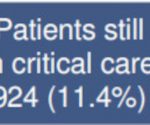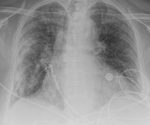SARS-COV to ACE2 binding and the dangerous Covid-19 truth
As the regular FBEL reader will know, SARS-COV to ACE2 binding is the essential Covid-19 subject matter that neither alternative nor mainstream corporate media will touch with a barge pole. Because the information is so crucially damaging to the official Covid-19 narrative, and would present an opportunity for the general public to ask the most dangerous question of all regarding the origin of ACE2, there is good cause to suspect that its omission from all media presentation (except from when some corporate-media investigated at the start of the episode) is the result of all media in question being controlled, and responding to an order that has been given with the intention of marginalising the data, and any who would attempt to cover it outside of specialist publications (which the general public does not access).
In the following article, to further demonstrate that SARS-COV to ACE2 binding is a phenomenon so significant that it should be the central and permanent topic of debate (not to be displaced by take-a-turn talking points, which at the moment concerns the flaw in the case-led justification of lockdown, or “casedemic”, but has most recently been in respect of the efficacy of face masks), there will be a presentation of extracts from three scholarly articles that have been published since May. There are more recent examples to be found than these, if one takes the trouble of looking beyond the first page of the results of an internet search query, or indeed refining the parameters of the search. The point of selecting these (front page) articles was to intimate that the information is being hidden in plain view.
If he hasn’t already, the reader is advised to look at material on and related to this topic that has already appeared at FBEL (listed below). Although the reader doesn’t need any background reading for the primary point of this exercise, which is to show more evidence of a scientific understanding of Covid-19 apart from the propaganda version, this article will turn into a brief discussion of the material presented so a broader knowledge might be helpful.
As mentioned above, the following extracts are from recent publications. The source of the extract and date of publication is given with each one. There follows from that, as also previously mentioned, a discussion of the extracts as a whole.
Title: How does SARS-CoV-2 cause COVID-19?
Science: 31 Jul 2020, Nicholas J. Matheson et al
Viruses enter cells and initiate infection by binding to their cognate cell surface receptors. The expression and distribution of viral entry receptors therefore regulates their tropism, determining the tissues that are infected and thus disease pathogenesis. Severe acute respiratory syndrome coronavirus 2 (SARS-CoV-2) is the third† human coronavirus known to co-opt the peptidase angiotensin-converting enzyme 2 (ACE2) for cell entry. The interaction between SARS-CoV-2 and ACE2 is critical to determining both tissue tropism and progression from early SARS-CoV-2 infection to severe coronavirus disease 2019 (COVID-19). Understanding the cellular basis of SARS-CoV-2 infection could reveal treatments that prevent the development of severe disease, and thus reduce mortality.
… As a respiratory virus, SARS-CoV-2 must initially enter cells lining the respiratory tract…. Upper respiratory tract symptoms are common early in disease, with nasopharyngeal and throat swabs positive for SARS-CoV-2 at clinical presentation….‡
Although a substantial proportion of SARS-CoV-2–infected individuals report few, if any, symptoms and recover completely, chest computed tomography (CT) evidence of viral pneumonitisǂ is present in >90% of symptomatic cases within 3 to 5 days of onset. This presumably reflects viral replication in the lower respiratory tract, with infection of type II pneumocytes and accompanying inflammation… Lung pathology in this early phase is poorly reported because most patients recover…
Around 80% of patients with COVID-19 pneumonitis recover without specific treatment. However, ~20% of patients deteriorate, often rapidly, ~7 to 10 days after symptom onset. This is when patients are most frequently admitted to hospital, with worsening fever, hypoxia, lymphopenia, rising inflammatory markers [C reactive protein (CRP), interleukin-1 (IL-1), and IL-6], coagulopathy, and cardiovascular involvement…
What causes the sharp deterioration that leads to severe systemic COVID-19?
…The timing of deterioration suggests a role for the adaptive immune system, either antibodies or T cells, and has many hallmarks of immune-driven inflammation. Endothelial injury may result from immune-mediated damage, through complement activation, antibody-dependent enhancement, and/or cytokine release. Attention has therefore focused on the use of immunomodulatory therapies in patients with severe disease. Nonetheless, the most obvious culprit for severe disease is the virus itself, either alone or with immune pathology. Breakdown of the lung epithelial-endothelial barrier might trigger endothelial damage and viral dissemination, with more widespread infection.
† The other two are SARS-CoV and HCoV-NL63.
ǂ Inflammation of lung tissue. Technically, pneumonia is a type of pneumonitis.
[‡ Additional, 04/03/21: That this disease starts in the upper respiratory tract is disputed at FBEL; see Covid-19 Is Not Flu (link).]
Also from the same article:
ACE2 is a transmembrane protein best characterized for its homeostatic role in counterbalancing the effects of ACE on the cardiovascular system. ACE converts angiotensin I to angiotensin II, a highly active octapeptide that exhibits both vasopressor (vascular contraction to increase blood pressure) and proinflammatory activities. The carboxypeptidase activity of ACE2 converts angiotensin II to the heptapeptide angiotensin-(1-7), a functional antagonist of angiotensin II. Because ACE is highly expressed in vascular endothelial cells of the lungs, angiotensin II is also likely to be high in the pulmonary vasculature. Indeed, Ace2 deletion in mouse models of acute lung injury results in more severe disease, suggesting a protective role for ACE2 in lung tissue. In many host-virus interactions, expression of the viral receptor is down-regulated in infected cells, and expression of ACE2 in the lungs of mice was reduced by SARS-CoV infection. Depletion of ACE2 may thus play a causative role in the lung injury caused by SARS-CoV and SARS-CoV-2, and high plasma angiotensin II is reported in patients with COVID-19. However, MERS-CoV causes a similar lung disease without targeting ACE2, so other factors must also be important.
(Source).
Title: The pivotal link between ACE2 deficiency and SARS-CoV-2 infection
European Journal of Internal Medicine: 1 Jun 2020, Paolo Verdecchia et al
Unfortunately, the entry of SARS-CoV2 into the cells through membrane fusion markedly down-regulates ACE2 receptors, with loss of the catalytic effect of these receptors at the external site of the membrane. Increased pulmonary inflammation and coagulation have been reported as unwanted effects of enhanced and unopposed angiotensin II effects via the ACE→Angiotensin II→AT1 receptor axis. Clinical reports of patients infected with SARS-CoV-2 show that several features associated with infection and severity of the disease (i.e., older age, hypertension, diabetes, cardiovascular disease) share a variable degree of ACE2 deficiency. We suggest that ACE2 down-regulation induced by viral invasion may be especially detrimental in people with baseline ACE2 deficiency associated with the above conditions. The additional ACE2 deficiency after viral invasion might amplify the dysregulation between the ‘adverse’ ACE→Angiotensin II→AT1 receptor axis and the ‘protective’ ACE2→Angiotensin1-7→Mas receptor axis. In the lungs, such dysregulation would favor the progression of inflammatory and thrombotic processes triggered by local angiotensin II hyperactivity unopposed by angiotensin1-7. In this setting, recombinant ACE2, angiotensin1-7 and angiotensin II type 1 receptor blockers could be promising therapeutic approaches in patients with SARS-CoV-2 infection.
(Source).
Title: Enhanced receptor binding of SARS-CoV-2 through networks of hydrogen-bonding and hydrophobic interactions
PNAS: 23 June 2020, Yingjie Wang et al
What mutations in the 2019 novel coronavirus make it a stronger binder to ACE2 than SARS-CoV, but, at the same time, capable of evading the antibody against SARS-CoV? An understanding of the underlying mechanisms for protein–protein association between the ACE2 receptor and the RBD of SARS-CoV-2 as well as the difference from that of SARS-CoV is important for virus detection, epidemic surveillance and prevention, and vaccine and inhibitor design.
In this study, we present findings from molecular dynamics (MD) simulations of binary complexes of the RBD domains of both the SARS and COVID-19 viruses with the common receptor ACE2 and the antibody 80R. The present simulations reveal that both electrostatic complementarity and hydrophobic interactions are critical to enhancing receptor binding and escaping antibody recognition by the RBD of SARS-CoV-2.
… Overall, the sequence differences in the RBM [receptor binding motif] enable greater electrostatic complementarity with the receptor ACE2 in SARS-CoV-2 complex than that of SARS-CoV.
(Source).
From the Science article there is perhaps some assistance to an answer to the question, can Covid-19 sufferers be asymptomatic? In the past, it has been reasoned hereabouts that infection must present itself in symptoms, otherwise there is no infection (i.e. the PCR test results generally produce false positives). Apparently, more than 90% of symptomatic cases will present viral pneumonitis, which shores up the implicit connection. That being said, around 80% of symptomatic cases recover without deterioration. And so the Science article confirms the fact that Covid-19, when it is not countered by an immune response, is a rare illness requiring hospitalisation to prevent deterioration to death, and so the ICU figures produced by ICNARC (where some 4400 people have died of Covid-19 in and after critical care) are indeed the best indicator of a real Covid-19 death toll.
The Science article also broaches the subject of cause of deterioration, and speculates on two causes: i) an overreaction of the immune system, or an autoimmune response, and ii) the destructiveness of the virus itself. Hereabouts it has been argued that immune overreaction is itself a matter of damaged health terrain whereby the chemistry involved in signalling has been disrupted. Indeed, and as the Science article hints, the capability of the virus to infect must be related to immune response, or lack of it in the positive sense, so that both causes boil down to the same problem of a compromised immune system. Naturally, (and the reader will discover this if he investigates further) there is a tendency in the medical specialist media to concentrate on causes which would require solutions appropriate to a mindset which doesn’t believe that a body can heal itself without allopathic intrusion, and non-vaccine “cures” for SARS-COV to ACE2 binding are lining up to involve the introduction of more substances to prevent binding, or to offer decoys for the SARS-COV to bind to.
In fact, the second extract from the Science article touches on a cure that involves introducing more ACE2 – which the author suspects is not a real solution, but a strategy to deflect blame away from the real cause of Covid-19, which looks like it could be certain prescription drugs.
This is a breakdown of the relationship between ACE and ACE2 as summarised from the extract:
ACE has a detrimental effect on the cardiovascular system. ACE2 counterbalances ACE, and in this way: While ACE converts angiotensin I to angiotensin II, ACE2 converts angiotensin II to the heptapeptide angiotensin-(1-7). Angiotensin II is said to be the problem for a number blood and heart related illnesses, but ACE2 is said to neutralise it.
Also, then, what the Science article seems to say is the depletion of ACE2, presumably through being used by SARS-COV, is then a problem for prevention of further lung injury because of angiotensin II levels in COVID-19 patients.
However, as the article immediately goes on to say, because ACE2 depletion in MERS-COV does not occur, there must be another factor. In other words, the angiotensin II could be irrelevant, and so the fixes proposed by the writers of the European Journal of Internal Medicine paper (boiling down to application of Angiotensin II receptor blockers, or ARBs, and the introduction of ACE2) would not in fact be appropriate.
And if we turn our attention to the extract in question, it talks about particular conditions where ACE2 deficiency would occur so that there would be correlation with susceptibility to Covid-19: “older age, hypertension, diabetes, cardiovascular disease”). As has been explained previously at FBEL, the UK Government wants to make this correlation about obesity, which of course is about hiding a truth about ACE2.
Additionally, in this extract we seem to have confirmation that ACE2 levels are reduced as they are used up by binding to SARS-COV. What the piece seems to be proposing is that certain people who are susceptible to Covid-19 don’t have enough ACE2 to begin with. However, the simplest explanation would be that actually ACE2 levels are too high to begin with, and thus present more opportunity for the disease to take hold.
So, if we begin to accept this idea, and reject the deflection from it, we must ask why it is that older age people, and people with hypertension, diabetes, cardiovascular disease would have ACE2 levels whereby they would be susceptible to Covid-19.
It has been proposed that medication for hypertension, diabetes, cardiovascular disease, called ACEIs and ARBs (Angiotensin-Converting Enzyme Inhibitors and Angiotensin II receptor blockers), generate greater levels of ACE2 than otherwise would be present. FBEL covered this proposal in the second article listed at the foot of the page, but here follows an extract from the article from Science Daily that carried the story on 23rd March, which is reproduced here in its near entirety because it’s very important to see the detail of the hypothesis being proposed.
“Angiotensin-converting enzyme inhibitors (ACEIs) and angiotensin receptor blockers (ARBs) are highly recommended medications for patients with cardiovascular diseases including heart attacks, high blood pressure, diabetes and chronic kidney disease to name a few,” notes Dr. Diaz. “Many of those who develop these diseases are older adults. They are prescribed these medications and take them every day.”
Research in experimental models has shown an increase in the number of ACE2 receptors in the cardiopulmonary circulation after intravenous infusions of ACE inhibitors.
“Since patients treated with ACEIs and ARBS will have increased numbers of ACE2 receptors in their lungs for coronavirus S proteins to bind to, they may be at increased risk of severe disease outcomes due to SARS-CoV-2infections,” explains Diaz.
Diaz writes, this hypothesis is supported by a recent descriptive analysis of 1,099 patients with laboratory-confirmed COVID-19 infections treated in China during the reporting period, December 11, 2019, to January 29, 2020. This study reported more severe disease outcomes in patients with hypertension, coronary artery disease, diabetes and chronic renal disease. All patients with the diagnoses noted met the recommended indications for treatment with ACEIs or ARBs. Diaz says that two mechanisms may protect children from COVID-19 infections — cross-protective antibodies from multiple upper respiratory tract infections caused by the common cold-causing alpha coronaviruses, and fewer ACE2 receptors in their lower respiratory tracts to attract the binding S proteins of the beta coronaviruses.
He recommends future case-control studies in patients with COVID-19 infections to further confirm chronic therapy with ACEIs or ARBs may raise the risk for severe outcomes.
If Diaz’s recommended case controlled studies have taken place then they are not known to the author. In fact, it is very doubtful, given the effort by the medical establishment that has gone into auto-squashing the idea that commonly prescribed medicine causes Covid-19, that any attempt at all has been made to understand the link between ACEIs and ARBs, and ACE2 levels.
There is another extract above, the reader will notice, taken from a third article, and the point of including this piece was to show that a good deal of scientific activity has grown out of the real phenomenon of SARS-COV to ACE2 binding. The academic article in question talks about the microscopic conditions that facilitate SARS-COV binding, but the reader is asked to notice that whatever understanding is demonstrated in the paper, it is nevertheless only reached by the use of simulations. Famously, SARS-COV-2 has never been isolated, and as covered in the third article in the list below, microscopic imaging of the SARS-COV to ACE2 binding was achieved by using a fragment of a viral complex so that the virion it was severed from need not have been SARS-COV-2. In short, while inflammation and fibrosis in the lung are observable facts of Covid-19, and that this can discovered as being related to binding involving ACE2 (which was a known phenomenon in terms of the original SARS-COV), a fact of SARS-COV-2 involvement has not been established. Indeed, it has been proposed here at FBEL that Covid-19 is the same disease as that which develops from SARS-COV, made a little more virulent by increased ACE2 levels.
Covid-19 and pneumonic immune system overreaction (link) – March 20th
Is “Covid-19” an NHS prescribed drug-induced pneumonia (amongst other things)? (link) – March 27th
More on SARS-COV-ACE2 binding & “true” Covid-19 that discredits UK Government’s pretext for creating economic disaster (link) – April 2nd
No surprises as Covid-19’s exceptionality remains ignored and unreported; ACE2 crops up again (link) – April 25th
The Covid-19 science problem; Part One: for the sake of propaganda, there is no unified understanding of the disease (link) – May 8th



















I looked into this a bit more as seemed an astute hypothesis. However several recent studies have concluded that there doesn’t appear to be a link. For example, see:
https://www.ncbi.nlm.nih.gov/pmc/articles/PMC7346797/
https://www.ncbi.nlm.nih.gov/pmc/articles/PMC7377983/
https://www.ncbi.nlm.nih.gov/pmc/articles/PMC7243952/
Thanks for your valuable comment. I’ve seen some of these – if not these exact papers, then others like them – and it’s one reason why I refer to a concerted effort to damage the idea (there’s not enough time to cover everything thoroughly). So, it’s best if I deal with them in a dedicated article. On the face of it, from the honest use of language in the comment – and this is directed to all readers – one can assume the link has not been conclusively disproved in these papers.
Thank you, I look forward indeed to reading your further comments about the matter.
Excellent writing.
It seems the papers linked above actually believe the opposite of your view. That Ace inhibitors actually help to improve the chances of someone recovering.
I am trying to follow it as best I can, but seems quite strange that it’s as stark a contrast to your hypothesis.
also this:
https://link.springer.com/article/10.1007/s11883-020-00880-6
though not randomised clinical trials